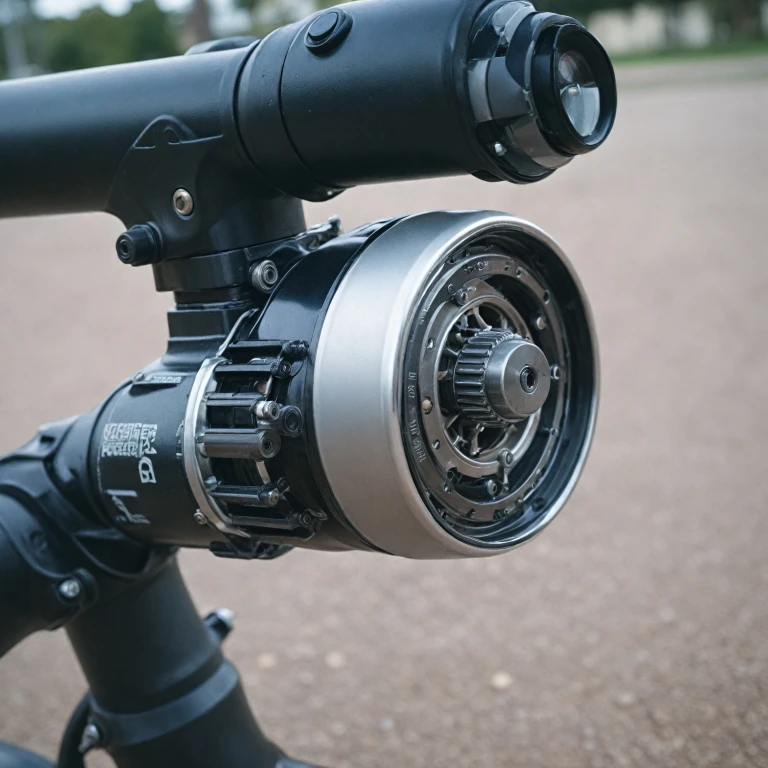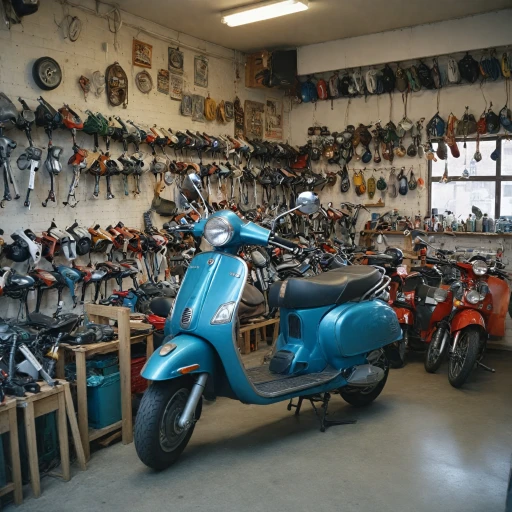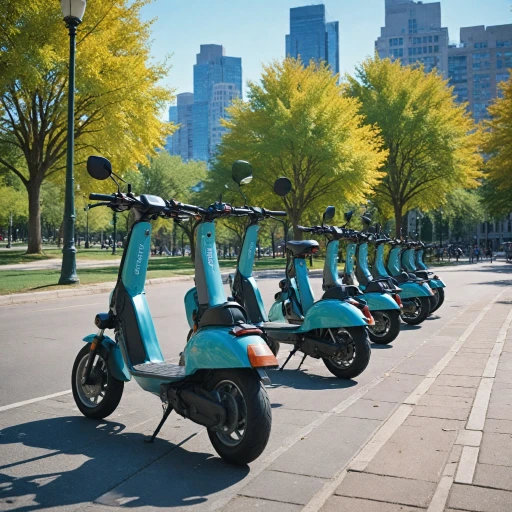Types of E Scooter Motors
Exploring Electric Scooter Motors
The electric scooter market is evolving rapidly, bringing a variety of motors into play that cater to diverse riding preferences and needs. Understanding the power dynamics behind these motors is crucial. You’ll find that the architecture of e-scooter motors can drastically impact performance, efficiency, and riding experience.
Two primary types of motors are used in electric scooters:
- Hub Motors: These are the most common and are integrated directly into the scooter's wheel. Hub motors offer seamless performance with fewer moving parts, reducing the likelihood of maintenance issues. They come in various inch sizes to suit different scooter designs.
- Chain Sprocket Motors: These motors are generally used for high-performance scooters. They provide higher peak power and top speed but require more maintenance due to the additional components involved.
Among these, brushless motors have become highly popular due to their efficiency, durability, and quieter operation compared to their brushed counterparts. Brushless technology is a significant advancement in scooter motors, contributing to better power management and speed.
Considering the increasing price and performance demands, choosing the right motor type involves weighing factors such as motor power in watts, voltage requirements, and the intended use of the scooter. Learn more about the power behind electric scooters.
How E Scooter Motors Work
Demystifying Electric Scooter Motor Operation
Electric scooters are powered by motors that transform electrical energy into the kinetic energy needed to drive. Most modern electric scooters feature a brushless motor design, preferred for its efficiency, durability, and lower maintenance needs compared to older brushed counterparts. The operation of an electric scooter motor begins with the battery supplying power to the motor through a controller. This power, typically measured in volts and watts, determines the performance and speed capabilities of the scooter. The controller regulates the power output, allowing for smooth acceleration and speed control. Scooters primarily use hub motors, which fit within the wheel itself, providing direct drive and improved efficiency. Hub motors have fewer moving parts, reducing wear and enhancing longevity. These motors can vary in size, with typical sizes ranging from 6 to 12-inch wheel diameters. Larger wheels often contribute to better ride stability, while smaller ones may provide enhanced agility. Selecting the best type of motor depends on various factors, such as desired top speed and motor power. A motor with higher watt power can offer increased speed and performance, but it might come at a higher price. For individuals seeking power and speed, choosing a motor that supports higher watts and voltage can be beneficial. Performance factors such as peak power and torque significantly influence how a scooter performs under different conditions. Understanding these technical aspects can greatly help in choosing a scooter motor that aligns with your needs. For in-depth insights, consider exploring more on the nature and efficiency of these motors. By understanding how these components work together, users can make informed decisions and enjoy optimized scooter performance.Performance Factors of E Scooter Motors
Factors Impacting E Scooter Motor Effectiveness
Understanding the performance of electric scooter motors involves diving into several influential factors. Here’s a closer look at what determines how well these motors perform:- Motor Power and Voltage: The power of an electric scooter motor is typically measured in watts. Higher watts generally translate to better performance, including faster speeds and superior hill-climbing ability. The motor’s voltage, measured in volts, further influences the motor's output. Combining optimal watts and volts can maximize efficiency and power.
- Weight and Terrain: The weight of the rider and the terrain on which the scooter is used significantly affect motor performance. Heavy riders or rough, hilly terrains demand more from the motor, potentially impacting speed and power consumption.
- Hub Motor vs. Chain Sprocket: Hub motors are integrated into the wheel, providing a sleek, maintenance-free design often found in modern electric scooters. In contrast, chain sprocket systems may require more maintenance but can offer more power. Each has different performance implications.
- Brushless Motors: Most modern scooters use brushless motors, which are more efficient, durable, and quieter than their brushed counterparts. The absence of brushes reduces friction and wear, enhancing scooter performance.
- Battery Capacity and Efficiency: Batteries supply power to the motor. A scooter with a high-capacity battery sustains top speed and longer range, crucial for maximizing motor performance. Efficient power management systems also extend battery lifespan and performance.
Choosing the Right Motor for Your Needs
Finding the Perfect Motor for Your Electric Scooter
Choosing the right motor for your electric scooter is crucial for achieving the desired performance and efficiency. When selecting a motor, consider several factors that align with your specific needs and preferences. Here are some key points to help guide your decision:
- Power and Performance: The power of the motor, measured in watts, significantly impacts the scooter's performance. Higher wattage motors typically offer better acceleration and top speed. If you're looking for a scooter that can handle hills or carry heavier loads, consider a motor with higher wattage.
- Type of Motor: Brushless motors are often preferred for electric scooters due to their efficiency and durability. These motors require less maintenance and provide smoother rides compared to brushed motors.
- Hub Motor vs. Chain Sprocket: Hub motors are integrated into the wheel, offering a compact design and quieter operation. On the other hand, chain sprocket systems might provide more torque, which can be beneficial for off-road or rugged terrains.
- Wheel Size: The size of the wheel, often measured in inches, can affect the scooter's stability and comfort. Larger wheels can handle rough surfaces better and provide a smoother ride.
- Battery Compatibility: Ensure that the motor's voltage is compatible with your scooter's battery. Common voltages for electric scooter motors are 24V, 36V, and 48V. A mismatch can lead to suboptimal performance or damage.
- Price and Shipping: While considering the price, also check for any additional costs such as shipping. Some suppliers offer free shipping, which can be a cost-effective option.
By understanding these factors, you can make an informed decision that balances power, performance, and cost. Remember, the best motor for your scooter is one that meets your personal riding needs and budget.
Maintenance Tips for E Scooter Motors
Tips to Keep Your Scooter Motor Running Smoothly
Proper maintenance of your electric scooter motor is crucial to ensure its longevity and optimal performance. Neglecting this can lead to reduced efficiency and potential breakdowns, affecting your ride experience. Here are some practical tips to keep your motor, especially the brushless and hub motors typically found in modern scooters, in top shape:- Regular Cleaning
- Dust, dirt, and debris can accumulate over time, particularly around the motor area. Regularly clean your scooter to prevent these particles from penetrating the motor, which could affect its performance.
- Check Connections
- Inspect electrical connections to ensure they are secure. Loose connections can cause power fluctuations and may damage the motor over time.
- Monitor the Volt and Watt Ratings
- Ensure your scooter’s motor is operating within its designed volt and watt capacities. Overloading can lead to overheating, reducing the motor’s lifespan.
- Inspect the Chain and Sprocket (if applicable)
- Some scooters may use a chain and sprocket system. Keep these components well-oiled and free from rust to maintain smooth power transfer from the motor.
- Tire and Wheel Maintenance
- Check the condition of your scooter’s wheels, including the inch size and hub structure. Properly inflated tires reduce the motor's workload, enhancing performance.
- Battery Care
- A well-maintained battery provides consistent power output, crucial for the motor's performance. Regularly check your battery's health and replace it if necessary to avoid strain on the motor.
Future Trends in E Scooter Motor Technology
Innovations and Emerging Trends in Electric Scooter Motors
The future of electric scooter motors is a dynamic and fascinating landscape. As technology advances, there's a focus on several innovative trends and emerging changes that could redefine the experience of riding electric scooters.- Brushless Motors Adoption: Brushless motor technology continues to gain traction in the e-scooter industry due to its reliability and efficiency. These motors provide better durability and less maintenance as they eliminate the need for brushes, thereby enhancing scooter performance.
- Improved Power Outputs: As demand for higher speed and power grows, manufacturers are increasing the wattage in electric scooter motors. We see motors with higher volts and peak power outputs that cater to enthusiasts seeking top speed and those looking for a more robust ride for varied terrains.
- Integration of Hub Motors: Hub motors are an area of innovation, providing compact, efficient power delivery directly to the wheels. This development offers a smoother and more silent ride, with embedded technology enhancing the user experience while keeping manufacturing costs down, leading to better price options for consumers.
- Smart Technologies and Connectivity: There's a growing trend in integrating smart technologies with scooter motors. Features such as real-time performance monitoring via mobile apps or integrated interfaces are becoming common, allowing users to track speed, battery levels, and maintenance alerts.
- Customization and Modular Upgrades: Future scooters might include customizable motor parts, such as interchangeable wheel sizes (inch options) and motor styles to fit personal preference and use case. This flexibility could be a major draw for tech-savvy users and commuting professionals, wishing to optimize their scooter's power motor setup based on specific needs.




